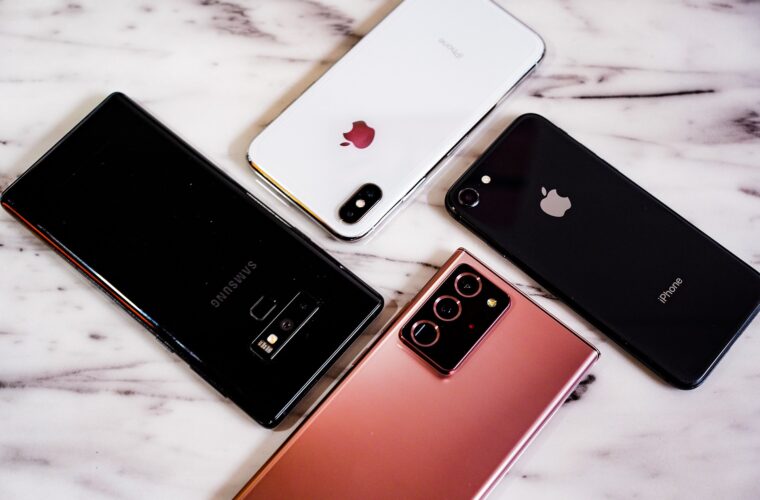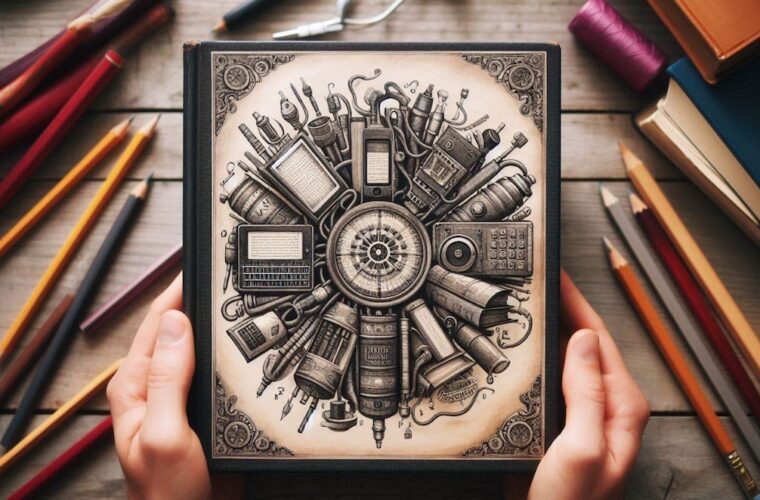Two basilicas are better than one because they allow anyone to discover the beauty inside. This is the thinking behind the project’ St. Peter’s Basilica: AI-Enhanced Experience‘, realised by the Fabbrica di San Pietro. This Vatican body manages the world’s most famous cathedral and Microsoft.
Two years after the first meetings between Cardinal Mauro Gambetti, president of the Fabbrica di San Pietro, and Brad Smith, vice chairman and president of the Redmond giant, the two inspirers presented the initiative just over 50 days before the start of the Jubilee 2025 (set for Christmas Eve). This crucial event for the Church and the city of Rome will bring some 30 million more pilgrims than usual to the capital during the year.
An unrivalled 3D model
To provide a substantial novelty for passing through the Basilica’s Holy Door and enjoying the artistic and architectural treasures inside, Microsoft has created a digital twin of St. Peter’s Basilica. This solution is designed to enable all Catholics around the world, as well as art and history lovers, to visit the world’s largest Basilica at any time and from any device.
During the presentation press conference, which was held at the Holy See’s Press Office, Brad Smith explained how ‘so many companies make a digital twin to improve their business and internal processes, no one has so far made an ultra-accurate 3D model of the world’s largest basilica’ and why the one with the Vatican is ‘one of the most technologically advanced and sophisticated projects ever‘.
In support of his thesis, Smith listed a series of unprecedented numbers and experiences: To map the entire structure, more than 400,000 high-resolution photos were needed, equivalent to 22 petabytes, a mass of data with which to fill 5 million DVDs. Iconem, a French company specialising in 3D digitising sites and cultural heritage, needed knowledge and techniques to take the shots.
Drones in action in the Basilica at night, with the structure closed to the public and guided by AI-based algorithms and latest-generation cameras, allowed the transalpine team to collect photographs that helped perfect the digital model with millimetre precision. But that’s not all. The scanning of the images made it possible to visualise cracks and fissures on the mosaic tesserae, favouring the possibility of specific interventions to reconstruct the missing parts and improve the state of the Basilica.
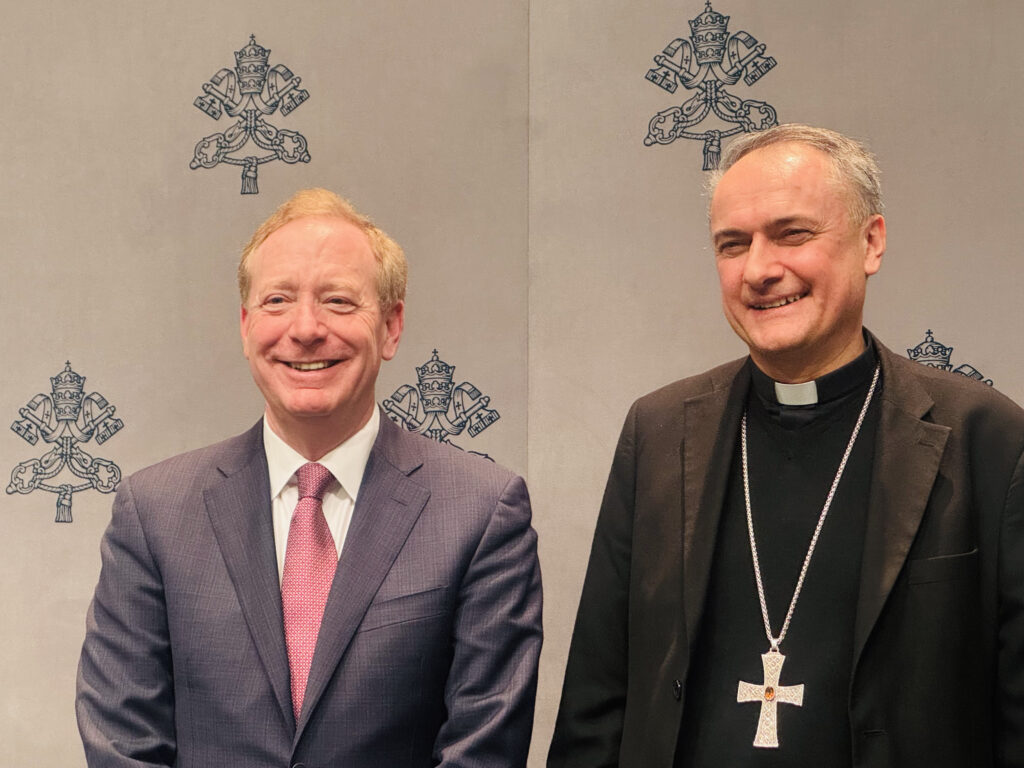
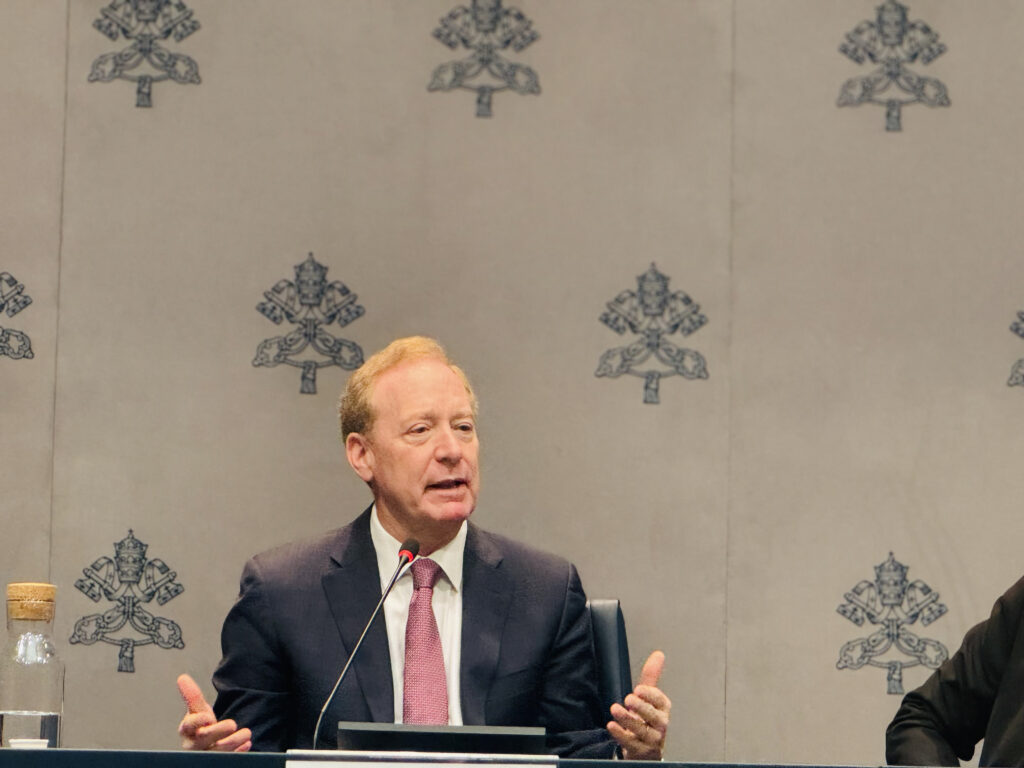
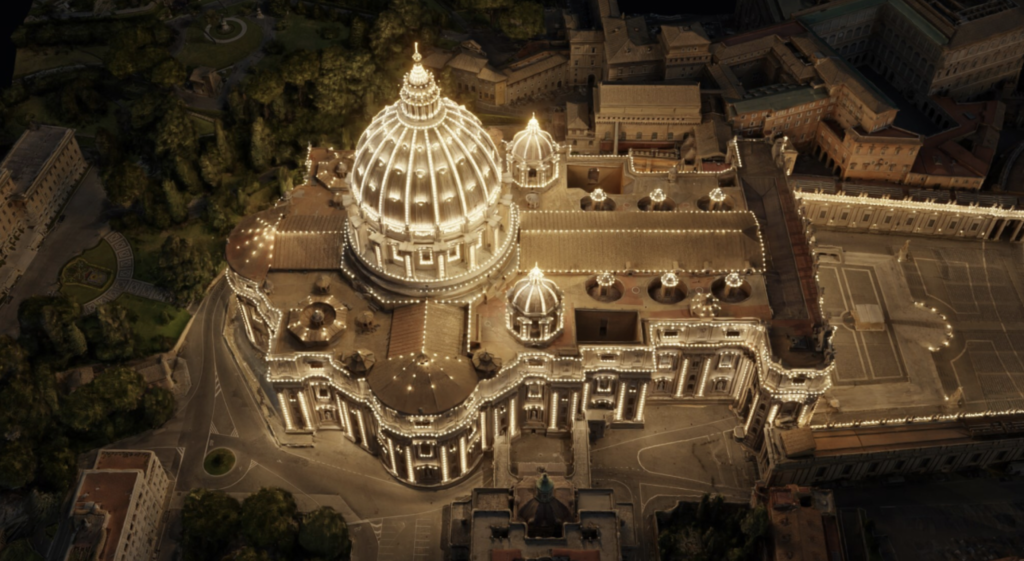
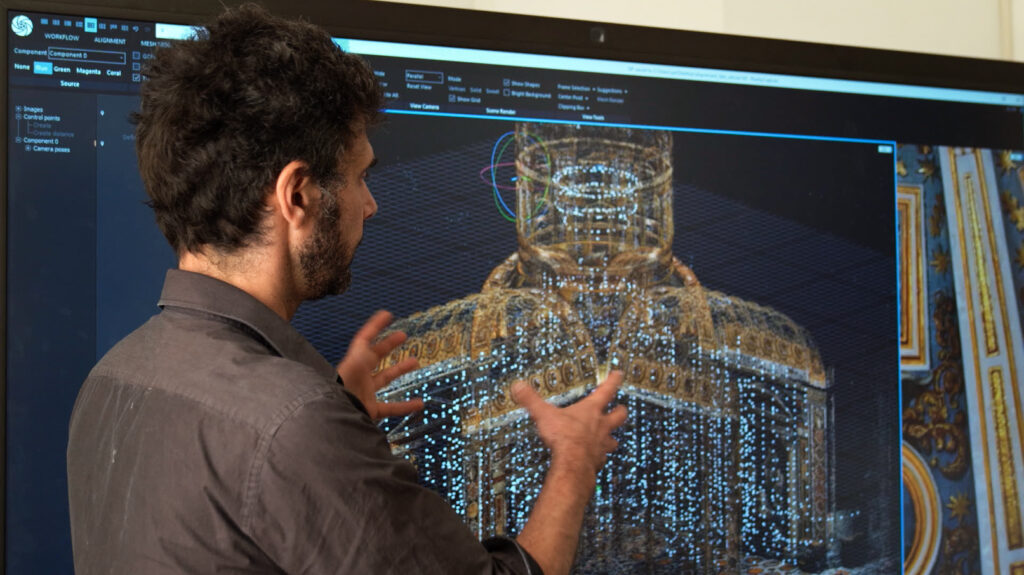
Virtual reality between history, art and technology
‘On average 40,000-50,000 people visit the Basilica every day, but with the digital twin anyone will be able to see it whenever they want, moreover this is just one of the innovations with which we want to improve the visitor experience. In the coming weeks there will be an app that will allow those interested to follow the flow of visitors in real time and plan their visit on days and at times that suit them, so as to reduce the queues that often force people to wait for hours in the sun or rain,’ said Cardinal Gambetti.
Suppose the digital version of the Basilica will delight the millions of Catholics scattered around the world who will not be able to travel to Rome during the Holy Year. In that case, those who will be able to visit on-site will also find something new, starting with the immersive spaces, with the two exhibitions Petros Eni and Petros Eni Octagon, which will offer digital tours combining technology, history, art and architecture.
Beyond what visitors will enjoy, the point is that in terms of resources, investment and outcome, the digital twin of St. Peter’s Basilica is a landmark for the Church, but especially for Microsoft. As Smith said during a session with the press, from now on, the company will be able to make a 3D replica of any structure, using the work done in Rome as a reference. Having had the opportunity to observe a small preview of the work done by Microsoft, I can only recommend planning a visit to the Basilica, looking carefully at the choice of day and time!

